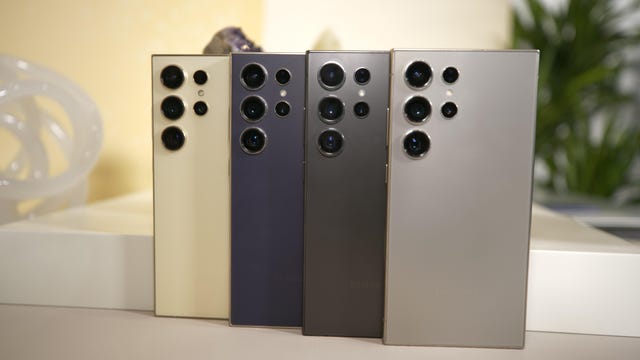Technologies
Samsung Galaxy S24 Ultra vs. Apple iPhone 15 Pro Max, Google Pixel 8 Pro, OnePlus 12: High-End Flagships Compared
How Samsung’s Galaxy S24 Ultra compares with the most expensive, non-folding phones offered by Apple, Google and OnePlus.
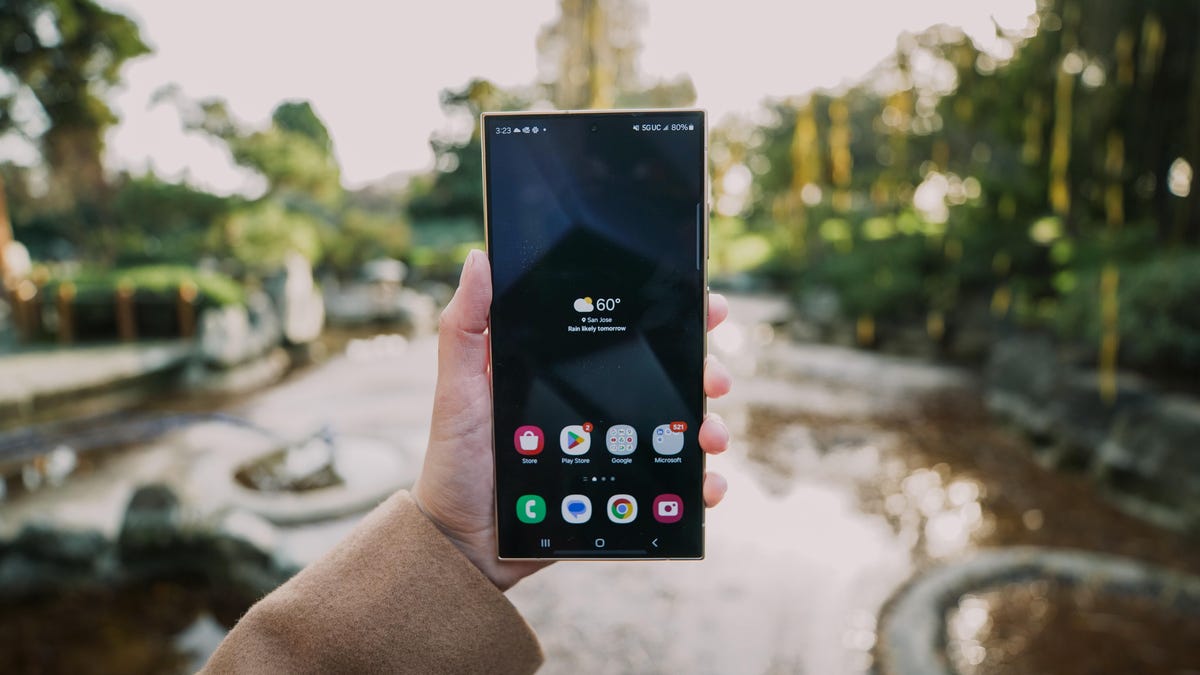
Samsung’s $1,300 (£1,249, AU$2,199) Galaxy S24 Ultra is the highest-end and priciest phone in the company’s lineup. Its highlights include new AI features and tweaks to its cameras.
It’s also by far the most expensive non-folding flagship phone currently available, coming in at $100 more expensive than last year’s base $1,200 Galaxy S23 Ultra and the also-$1,200 iPhone 15 Pro Max from Apple.
You get a lot for your money, though, including the beefiest phone specs and a camera that’s likely to specialize in detailed zoom photos. The S24 Ultra has the latest Qualcomm Snapdragon 8 Gen 3 processor and a large 6.8-inch AMOLED display. Its 200-megapixel main camera is now accompanied by a 50-megapixel telephoto camera.
While we’ll have to wait for CNET’s Galaxy S24 Ultra review to see how those specs work on a daily basis, we can compare those specs against the most expensive phones offered by other flagship phone makers.
In the below chart, we’ve outlined what’s inside the S24 Ultra and pit it against Apple’s iPhone 15 Pro Max, Google’s Pixel 8 Pro and the OnePlus 12.
Samsung Galaxy S24 Ultra vs. Apple iPhone 15 Pro Max vs. Google Pixel 8 Pro vs. OnePlus 12
| Samsung Galaxy S24 Ultra | iPhone 15 Pro Max | Google Pixel 8 Pro | OnePlus 12 | |
|---|---|---|---|---|
| Display size, resolution | 6.8-inch AMOLED; 3,120×1,440 pixels; 1-120Hz adaptive refresh rate | 6.7-inch OLED; 2,796×1,290 pixels; 120Hz adaptive | 6.7-inch OLED; 3,120×1,440 pixels; 1-120Hz adaptive refresh rate | 6.82-inch OLED; 3,168×1,440 pixels; 1-120Hz adaptive refresh rate |
| Pixel density | 501 ppi | 460 ppi | 489 ppi | 510 ppi |
| Dimensions (inches) | 6.40 x 3.11 x 0.34 in | 3.02 x 6.29 x 0.32 in | 6.4 x 3.0 x 0.3 in | 6.5 x 3 x 0.36 in |
| Dimensions (millimeters) | 163 x 79 x 8.6 mm | 76.7 x 159.9 x 8.25 mm | 162.6 x 76.5 x 8.8 mm | 164.3 x 76 x 9.2 mm |
| Weight (ounces, grams) | 233 g (8.22 oz) | 221 g (7.81 oz) | 213 g (7.5 oz) | 220 g (7.8 oz) |
| Mobile software | Android 14 | iOS 17 | Android 14 | Android 14 |
| Camera | 200-megapixel (wide), 12-megapixel (ultrawide), 10-megapixel (3x telephoto), 50-megapixel (5x telephoto) | 48-megapixel (wide), 12-megapixel (ultrawide), 12-megapixel telephoto (5x optical) | 50-megapixel (wide), 48-megapixel (ultrawide), 48-megapixel (telephoto) | 50-megapixel (wide), 48-megapixel (ultrawide), 64-megapixel (telephoto) |
| Front-facing camera | 12-megapixel | 12-megapixel | 10.5-megapixel | 32-megapixel |
| Video capture | 8K | 4K | 4K | 8K |
| Processor | Qualcomm Snapdragon 8 Gen 3 | A17 Pro | Google Tensor G3 | Qualcomm Snapdragon 8 Gen 3 |
| RAM/Storage | 12GB RAM + 256GB, 512GB, 1TB | 256GB, 512GB, 1TB | 12GB RAM + 128GB, 256GB, 512GB, 1TB | 12GB RAM + 256GB; 16GB RAM + 512GB |
| Expandable storage | None | None | None | None |
| Battery/Charger | 5,000 mAh | Undisclosed; Apple claims up to 29 hours of video playback (25 hours streamed) | 5,050 mAh | 5,400 mAh (dual-2,700 mAh) |
| Fingerprint sensor | Under display | None (Face ID) | Under display | Under display |
| Connector | USB-C | USB-C (USB 3.0) | USB-C | USB-C |
| Headphone jack | None | None | None | None |
| Special features | Titanium frame, 2,600-nit peak brightness; 7 years of OS and security updates; 5G (mmWave); IP68 water resistance; wireless PowerShare to charge other devices; integrated S Pen; UWB for finding other devices; 45W wired charging (charger not included); Galaxy AI; Wi-Fi 7; Gorilla Glass Armor cover glass | 5G (mmw/Sub6), Action Button, Always-On display, IP68 rating, MagSafe, Dynamic Island, 5x optical zoom (120mm equivalent),satellite connectivity, eSIM, Thread networking technology | 5G (Sub 6 and mmWave); VPN by Google One; 7 years of OS, security and Feature Drop updates; front-facing camera has autofocus; 13W Qi wireless charging; 30W wired charging; USB-3.2 speeds via USB-C; IP68 dust and water resistance; Gorilla Glass Victus 2 on front and back | 4,500-nit peak brightness; 80W wired charging (100W wired charging outside US); 50W wireless charging with fan dock; Wi-Fi 7; Gorilla Glass Victus 2 cover glass |
| Price off-contract (USD) | $1,300 (256GB) | $1,199 (256GB), $1,399 (512GB), $1,599 (1TB) | $999 (128GB) | $800 (256GB) |
| Price (GBP) | £1,249 (256GB) | £1,199 (256GB), £1,399 (512GB), £1,599 (1TB) | £999 (128GB) | TBD |
| Price (AUD) | AU$2,199 (256GB) | AU$2,199 (256GB), AU$2,549 (512GB), AU$2,899 (1TB) | AU$1,699 (128GB) | TBD |
Technologies
Blood of the Dawnwalker Is a Vampire Action RPG with Breath of the Wild’s Neatest Feature
At a preview event, I got an early look at the upcoming dark fantasy game from publisher Bandai Namco.
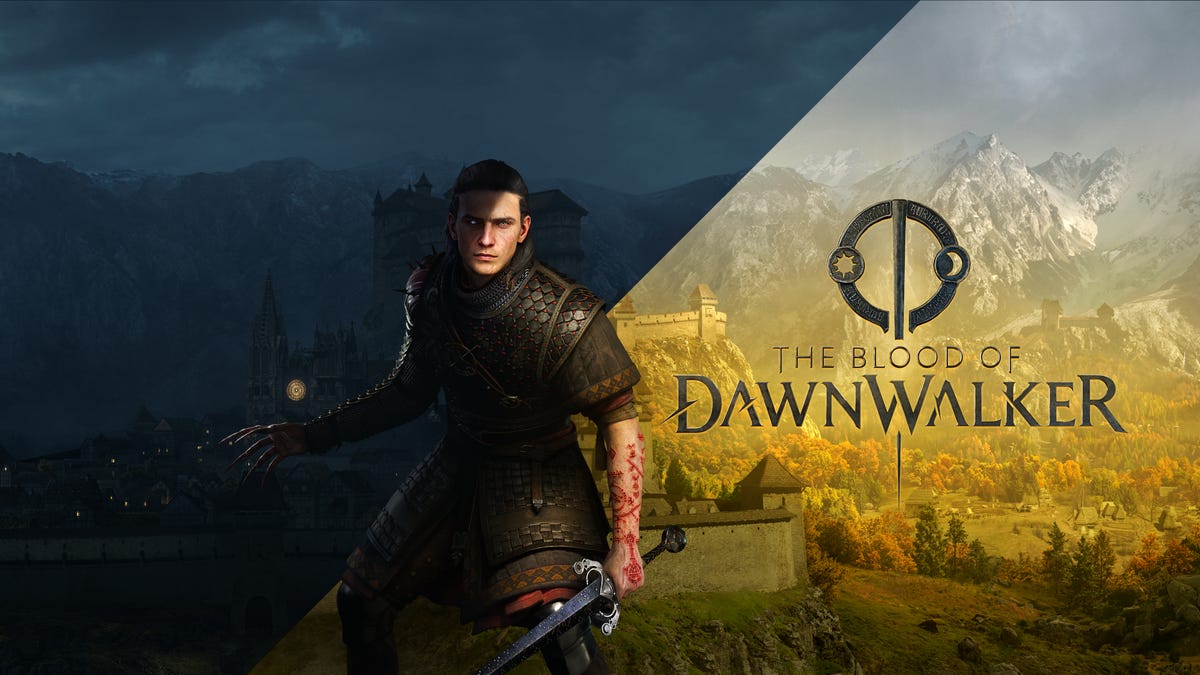
There’s an ill wind howling through the valley — and no, it isn’t just the plague ravaging 14th-century Eastern Europe. A family of vampires has taken over the quiet stretch between the Carpathian Mountains that you call home, and they’ve made you one of their gifted thralls. Now it’s up to you, a peasant given the powers of the blood-draining undead, to save your family, and perhaps the valley itself.
At a preview event in Los Angeles, California, I got an early hands-off look at Blood of the Dawnwalker, the upcoming action RPG due out in 2026 from Polish studio Rebel Wolves and published by Bandai Namco. While I didn’t play the game, I watched a lengthy presentation shown to a group of media members as a developer played a live build, walking us through the various cycles and mechanics that players will navigate in their quest to save the valley.
But in conversation with two of the game’s developers, I heard that Blood of the Dawnwalker has an uncommon feature — one that’s perhaps best known from The Legend of Zelda: Breath of the Wild. From the beginning of the game, you can march up to the game’s end boss, the vampire Francis, and try to defeat them.
«We have this narrative sandbox and our goal here is to tell the players, alright, you’re out of the prologue — you do you. If you want to go and storm Brencis’ Castle right here right now, go,» said Piotr Kucharski, writer at Rebel Wolves. «In fact, we invite it, right? We want to see those people on YouTube.»
That prologue sets the stage for the game: Protagonist Coen’s sister is infected with the Black Plague. She’s nearly killed by religious zealots but for the timely intervention of Brencis’ coven of vampires, who turn her into one of them. Their attempt to turn Coen fails, turning him into an empowered half-vampire. He has 30 days to save his family — but players can go about saving them in any way they choose. Each major action takes precious time, but players can choose to progress as they want. This means it’s possible to miss a ton of events and quests in the game.
Play by day or night — the choice is yours
The demo started at the gameplay overview, embedded above, but extended much further. The game’s developers walked us through a fork in the road in a quest for a magic sword. By day, as a mere human, Coen worked his way through church bureaucracy by hunting down a wayward caretaker who turned into a monster in a quarantined almshouse. He finally got access to a book in the church library, which identified which sigil to look out for in the graveyard. The sword, it turns out, was sequestered in a tomb with its bearer.
Daytime activity can involve swordplay, including use of magic-like hexes used in and out of combat, but it’s mostly geared toward investigation. You’ll talk (including to the dead, thanks to a handy Compel Soul hex), read books and get answers. But, as with nighttime, any prolonged activity like a lengthy conversation (indicated on the screen with a special icon, so players won’t be surprised) could take a segment of time, ticking the clock closer to Coen’s end-of-month deadline.
At the halfway point of the demo, the developer went back to show how things could be done differently at night, using Coen’s vampiric powers to shadowstep across rooftops and walk up walls — making it easy to sneak into that library to find the right book. But guards patrolling the graveyard would have to be dealt with to unearth the tomb, giving the developer the chance to show Coen’s undead fighting capabilities (including goring with claws and draining blood). Descending into the tomb, we found the sword, but it was still held by an undead knight imprisoned in the walls — a Dawnwalker like us gone mad by an extended lifetime of hunger and starvation.
Killing the knight gave us the vaunted sword, which after reforging, would be a powerful weapon when Coen eventually challenges Brencis. But that quest is optional, meaning some players will never find it. There are complications to choosing whether to do some quests during the day and night, too — for instance, it might be easier to sneak around at night, but that Dawnwalker knight would be harder to kill with his own nocturnal vampiric powers.
So, technically, players can choose to play entirely during the day or solely at night if they like one half of Coen’s abilities better than the other. But they’d be missing out. While some quests have both day and night layers, others can only be accessed in daylight or after the sun falls, said Rafał Jankowski, lead quest designer at Rebel Wolves.
«Some quests require Coen to speak to some corpses and similarly, certain places can only be reached with planeshift or shadowstep,» Jankowski said.
Splitting real-time combat with action RPG mechanics
The slice of combat we saw during the demo likewise split between day and night strategies. But most of the fighting will be done with a longsword, relying on rhythmically alternating between defense and offense. When enemies come at you swinging their own blades, directional indicators will pop up, requiring you to block in one of the four cardinal directions before counterattacking yourself.
When Rebel Wolves revealed Blood of the Dawnwalker’s combat in gameplay reveal videos, fans in the comments critiqued the potential difficulty of predicting directions to block. So the studio took that as feedback and came up with a solution to add another omnidirectional blocking ability, but which would drain Coen’s stamina in exchange. Likewise, when viewers complained the camera followed the player too closely, developers added a zoomed-out option.
«I do believe that we are still at the stage of development when it’s invaluable to get people involved more in the production, to hear their opinions on the project. We will keep our ear close to the ground,» Jankowski said.
Otherwise, Blood of the Dawnwalker follows some expected action RPG standbys, with equippable weapons and armor, healing items and upgradeable skills. The game has a trio of skill trees, split between daytime-only, nighttime-only and shared abilities.
The influence of Warhammer and The Witcher
Set in the Carpathian Mountains that stretch from modern-day Czech Republic to Romania and during the 14th century, with plenty of period-accurate fashion and architecture, Rebel Wolves’ game seemingly vibes with the more realistic Kingdom Come: Deliverance (set in modern-day Czech Republic). But a bigger inspiration, the developers told me, is Warhammer, the dark fantasy tabletop game about warring armies of men, elves, dwarves and monstrous creatures.
«I like the idea of a society, a medieval society that has a city, a thriving community but there is also this outside danger. You have Chaos, you have Skavens, you have all kinds of creatures, Orcs and so on,» Kucharski said. «Here [in Blood of the Dawnwalker], we have a bit of a different situation, because all those creatures come out into the light and they say, OK, we are going to rule you.»
With its corruption of Christian churches into incorporating seeming blood rituals as a vampiric touch, Blood of the Dawnwalker sure takes cues from Warhammer’s dark medieval vibe. But Kucharski also mentioned the tabletop RPG Vampire: The Masquerade (in its medieval variant) as another inspiration, as well as the Dragon Age series for its consequence of choices and system of magic.
But with its third-person sword-and-magic gameplay, supernatural monsters and vaguely Slavic setting, Blood of the Dawnwalker reminded me a lot more of another popular game from a Polish studio: The Witcher 3.
It’s a comparison that the developers have been getting a lot. Jankowski is quick to point out the different natures of both games’ protagonists, especially with Coen’s day-and-night cycles of human and vampiric ability. But more importantly, Kucharski noted how much history Geralt already has in the games, sourced from the popular series of Witcher novels — he’s the Butcher of Blavikan with his own reputation, whereas Coen is just some guy.
Of course, Coen will build his reputation as the game progresses in its zero-to-hero narrative, Kucharski said. And perhaps there’s more to his saga after Blood of the Dawnwalker ends, too — but the developers were coy about what plans they had coming for Coen.
«We hope that we’ll see some other adventures going maybe in the future,» Kucharski said. «Now we are focusing on the first one — just to get it right.»
Technologies
This TCL Phone Outperforms Samsung’s Budget Model and Is Now Even Cheaper at Just $200
With our exclusive code, you can nab the new TCL NxtPaper 60 XE at a record-low price.
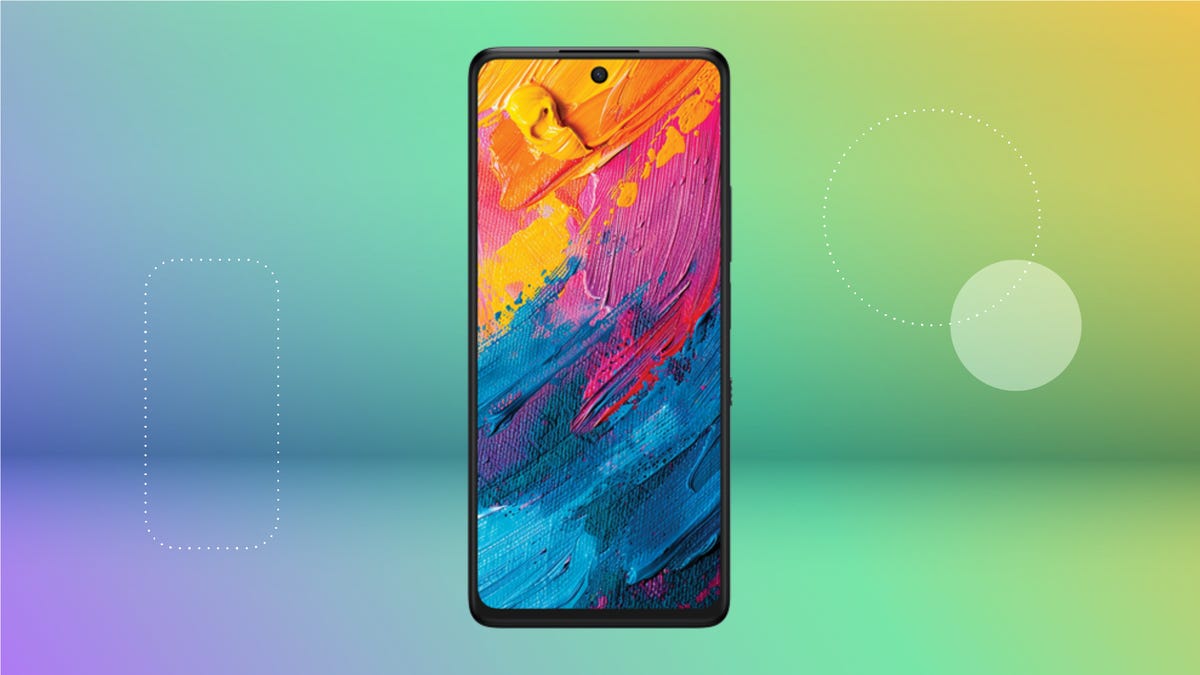
Phones are all a bit samey in 2025, so when something different comes out, we can’t help but pay attention. The TCL NxtPaper 60 XE is one of the most interesting phones we’ve reviewed recently, with a full-color, paperlike display. In fact, it’s an impressive budget phone that in many ways outperforms the Samsung Galaxy A16 5G at a similar price.
So you’ll be pleased to hear that the TCL NxtPaper 60 XE is currently reduced. Right now, it’s reduced from $250 to $222 on Amazon for Prime members. And if you use our exclusive promo code CNET10OF, you can bag an extra 10% off, bringing the total down to $200. But hurry, this code expires Aug. 27.
This phone hits top marks for everyday use. Its screen is large, the 120Hz refresh rate is buttery smooth and the battery lasted CNET reviewer Tyler Graham throughout the entire day, even with frequent use. If you take a lot of selfies, you’ll enjoy a big 32-megapixel upgrade to the front-facing camera, though the camera system is otherwise similar to TCL’s 50 series phones.
Hey, did you know? CNET Deals texts are free, easy and save you money.
The shiny bonus features on the TCL NxtPaper 60 XE are the eponymous NxtPaper digital ink and e-reader modes and cloud-based TCL AI. You might not use these features regularly, but they’re solid value adds to an already budget phone. The 60 XE is working off a MediaTek Dimensity 6100 Plus processor with 8GB of memory.
In his review, Graham said: «Compared to other phones in a similar price range, the TCL 60 XE NxtPaper 5G delivers where it counts for day-to-day use, and its impressive bells and whistles sweetened my experience with the phone.»
MOBILE DEALS OF THE WEEK
-
$350 (save $50)
-
$525 (save $125)
-
$300 (save $100)
-
$334 (save $295)
Why this deal matters
The TCL NxtPaper 60 XE is one of the most interesting smartphones we’ve reviewed recently. It’s definitely worth being on your radar if you’re on the lookout for a new budget handset. Already at an inexpensive price, this deal makes it a no-brainer for those looking for something a little different. Just make sure you get your order in before Aug. 27 when the coupon expires.
Technologies
Everything at Made by Google 2025: Pixel 10, Pixel Watch 4, Pixel 10 Pro Fold and More
Here’s what you missed at Google’s big event that included new phones, watches, earbuds, Gemini AI features and numerous celebrity cameos.
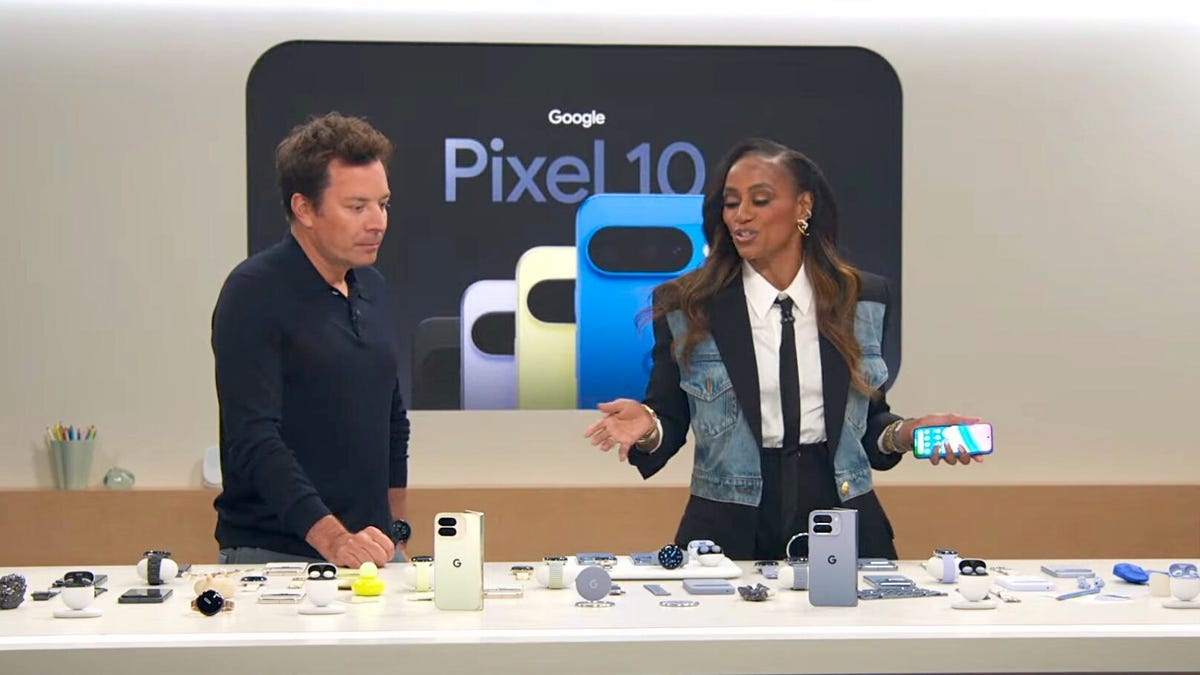
At yesterday’s Made by Google 2025 showcase in New York, Google unveiled something unexpected: playfulness. Hosted by The Tonight Show’s Jimmy Fallon in a format more like the talk show he’s famous for, the tech event included presenters and celebrity guests who didn’t look like they were delivering a script they’d been rehearsing for weeks. Everyone seemed to actually enjoy themselves as they revealed Google’s latest products.
And there were plenty of new products and other announcements to share. Following months of leaks and teases, the Pixel 10 phone lineup has now come into focus, with both specs and release dates. The Pixel Watch 4 is making leaps into more health and fitness tracking. And the new Pixel Buds 2A look (and sound) like an affordable alternative to the existing Buds Pro 2 with many of the same features and quality. And yes, AI played a big part, too, but it wasn’t the unrelenting focus of the show.
If you missed the event itself, you can catch the whole thing at YouTube or get right to the important stuff and read on for more details.
Pixel 10, Pixel 10 Pro and Pixel 10 Pro XL are real
Surprise — Google announced new phones! OK, this was the least surprising part of the event, but it still feels good to finally know what exists and when it’s coming. The phones keep the same looks as the Pixel 9 series, but they’re powered by new Tensor G5 processors that Google says is more powerful and simultaneously power-efficient.
On the base Pixel 10, however, there’s a surprise just barely visible in the camera bar: a new dedicated telephoto camera that joins the existing wide and ultrawide cameras. It shares the same 5x optical zoom as the pro models, but with a lower-resolution sensor and a lens with a narrower aperture.
Preorders for the Pixel 10, Pixel 10 Pro and Pixel 10 Pro XL began yesterday and the phones will be in stores and shipping starting Aug. 28. Read our hands-on coverage of the phones here:
-
I’m Stoked That Google Made the Pixel 10 a $799 Value-Packed Feature Monster
-
I Tested Google’s Pixel 10 Pro XL in Paris, and I’m Impressed
-
Pixel 10 Pro and Pro XL First Look: Familiar Design, New AI Tricks
-
Google Launches the Full Pixel 10 Line, Including the Pixel 10 Pro and Pixel 10 Pro XL
Pixel 10 Pro Fold opens the next chapter of foldables
Folding phones so far have had an Achilles’ hinge: small particulates like sand can get inside the case and mess things up. The Pixel 10 Pro Fold is one of the first to have an IP68 rating for dust and water resistance, meaning you can take your $1,800 phone to the beach. Or maybe make that the pumpkin patch, because the Pixel 10 Pro Fold is arriving later than the other Pixel 10 phones, on Oct. 9. You can preorder it now.
-
Pixel 10 Pro Fold Is Tougher, Smarter and Totally Dust Resistant
-
Forget the Pixel 10 Pro Fold. Foldables Should Look Like the Microsoft Surface Duo
-
Google’ Pixel 10 Pro Fold Is Here
Pixel Watch 4 talks to Gemini and is your new health coach
The Pixel Watch 4 has new fitness options including real-time guidance while exercising. And if you forgot to start a workout, the watch (with AI help) can detect the activity in the background and remind you of it later, giving you credit for the effort you made. It’s also the only smartwatch that can detect a loss of pulse and call emergency services automatically.
The smartwatch, which comes in 42mm and 46mm sizes, also has Gemini on board. «You don’t have to repeat yourself, you don’t have to switch to a robo-voice,» said CNET’s Vanessa Hand Orellana. It also includes emergency satellite texting if you find yourself out of cellular range with a dead phone battery.
Like the Pixel 10 Pro Fold, the Pixel Watch 4 models can be preordered now but won’t arrive until Oct. 9.
-
Well Played, Google: The Pixel Watch 4 May Give Apple Watch Loyalists a Wandering Eye
-
Pixel Watch 4 First Look: Google Just Raised the Bar
-
The Pixel Watch 4 Is Here. Can It Finally Beat Apple?
Pixel Buds 2A are more affordable earbuds
Joining the Pixel Buds 2 Pro in the market are the Pixel Buds 2A, an affordable ($130) pair of wireless earbuds that feature active noise cancellation, a smaller and lighter overall build and a twist-to-adjust stabilizer feature for setting a comfortable fit.
They’re available for preorder now in hazel and iris colors, and ship Oct. 9.
-
Google’s New Pixel Buds 2A Look a Lot Like the Pro 2, but Cost Way Less
-
Meet the Pixel Buds 2A: Google’s Budget Answer for ANC Buds
Pixel Buds Pro 2 owners will see new features
Coming in a software update next month, owners of Pixel Buds Pro 2 will be able to answer calls or send them to voicemail with a nod or shake of the head. You’ll be able to talk to Gemini live in noisy locations, and benefit from adaptive audio that applies noise cancellation while letting important sounds come through. At the other end, a new feature will protect your hearing from loud sounds.
Magic Cue is a Gemini assistant that pulls data from your correspondence
In the rollout of all the various AI technologies in the industry, the current stretch goal is «agentic» interactions with software: Having an AI that knows all sorts of details about you and can act to get the important stuff in front of you when needed. (And do it in a privacy-first way, one hopes.)
Magic Cue is Google’s implementation. It’s a new Gemini-based feature that can look through your earlier messages, emails and photos to pull details about things like restaurant reservations and flight times. Magic Cue runs on the Pixel device itself, so sensitive data stays private and not shared to the cloud.
A lot of Gemini AI intelligence is still coming soon
At the start of the event, Fallon sat down in typical talk-show format with Rick Osterloh, senior vice president of platforms and devices, to chat about Gemini and the marvels of AI. Aside from Magic Cue, which will be shipping on the Pixel 10 phones, a lot of the features and products we’ve been hearing about are still on the horizon.
«For instance, Gemini could do something like plan a team celebration dinner for 12 people tonight,» he said. «It might go find a restaurant that’ll accommodate that group. … Look for a karaoke place nearby and maybe even order custom T-shirts for the celebration.»
And when will that be possible? Fallon asked. «A lot sooner than people think,» Osterloh replied. «This kind of thing is coming this year.»
The Pixel 10 Pro and 10 Pro XL can zoom to 100x with AI help
Pro Res Zoom on the Pixel 10 Pro phones pushes zooming far beyond what would seem to be possible with typical small cameras. Usually when you zoom beyond the optical limits of the cameras, details get fuzzy as the software upscales the image. With Pro Res Zoom, when you go beyond 30x zoom, it uses generative AI to build a sharper version. CNET’s Andrew Lanxon got both impressive and head-scratching results while taking photos in Paris using the Pixel 10 Pro XL.
Camera Coach uses AI to encourage better photos
Smartphone cameras have employed AI for several years, such as identifying subjects in order to blur the background for Portrait modes or quickly snapping several shots at multiple exposures and blending them together to create well-balanced lighting throughout. Now Google is using AI to help you take better photos.
Camera Coach is a new feature in the Pixel Camera app that looks at the scene in front of the lens and generates multiple suggestions for how to improve the photo before it’s captured. To show this off, podcaster Alex Cooper brought Fallon out to be her model and sat him down on a couch. When she activated the feature, Camera Coach suggested that she move the camera closer to the subject, position his head in the upper portion of the frame, lower the camera to eye level and turn on Portrait mode.
«To all the girls that are watching, I personally know how hard it is to train your boyfriend or your husband to get that perfect shot,» said Cooper. «And now Camera Coach can just train all the boys for us.»
Don’t call it MagSafe: Pixelsnap brings Qi2 magnetic charging to the Pixel 10
The Qi2 spec includes not just faster charging but also an array of magnets on the back for connecting to accessories. Sound familiar? The presenters mentioned Apple’s MagSafe system, then paused with the realization that they probably shouldn’t have name-checked it during the Google event. On the Pixel 10 phones, it’s called Pixelsnap and should work with accessories made for Apple’s ecosystem too.
Gemini live translation, and the Pixel 10 will be available in Mexico
In an impressive segment demonstrating Gemini live translation during a phone call, musician Karen Polinesia announced, in Spanish and translated by the technology, that for the first time, the Pixel 10 will be available for sale in Mexico.
This article is being updated; stay tuned for more.
-

 Technologies3 года ago
Technologies3 года agoTech Companies Need to Be Held Accountable for Security, Experts Say
-

 Technologies2 года ago
Technologies2 года agoBest Handheld Game Console in 2023
-

 Technologies2 года ago
Technologies2 года agoTighten Up Your VR Game With the Best Head Straps for Quest 2
-

 Technologies4 года ago
Technologies4 года agoVerum, Wickr and Threema: next generation secured messengers
-

 Technologies4 года ago
Technologies4 года agoGoogle to require vaccinations as Silicon Valley rethinks return-to-office policies
-

 Technologies4 года ago
Technologies4 года agoBlack Friday 2021: The best deals on TVs, headphones, kitchenware, and more
-

 Technologies4 года ago
Technologies4 года agoOlivia Harlan Dekker for Verum Messenger
-

 Technologies4 года ago
Technologies4 года agoiPhone 13 event: How to watch Apple’s big announcement tomorrow

